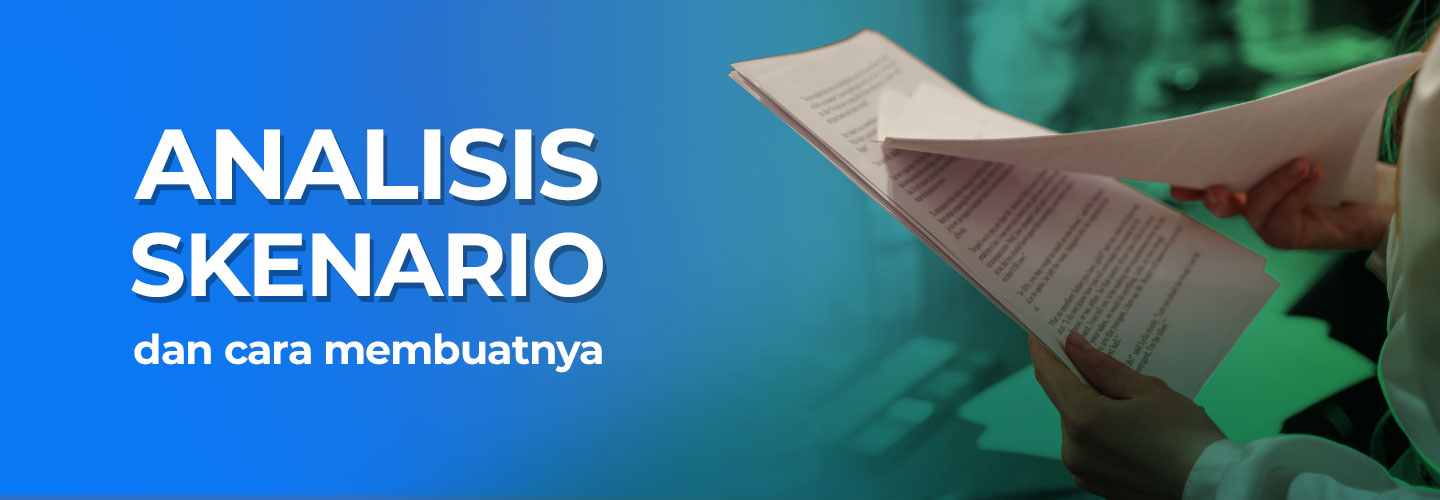Understanding Scenario Analysis and How to Conduct the Analysis

A business situation that continues to develop will face many changes from time to time. There are also quite a few adjustments that occur and encourage a business to carry out organizational restructuring.
The rapidly developing digital economy encourages companies to be responsive in facing market demands. Not limited to that, every organization is expected to be able to anticipate possibilities that may occur in the future.
When you are able to make predictions about what may occur in the midst of market competition, businesses will be better prepared to face change. Changes in every scenario that is crucial for business must be handled appropriately and accompanied by appropriate handling.
What is Scenario Analysis?
Scenario analysis is a technique used by businesses to examine and evaluate future possibilities and their various outcomes. It provides a tool that allows an organization to evaluate the impact of external and unexpected changes on its investments and business projections.
The purpose of scenario analysis is to assess the best and worst potential outcomes. That way, decision makers can understand the influence of changes in various external and internal factors that can affect their organization.
Scenario analysis will test the reliability of future decisions, provide insight into the potential impact of unexpected events, and identify potential opportunities and threats. Business leaders can make thorough plans for all scenarios so that business plan changes can be changed quickly when needed.
Benefits of Analyzing Scenarios
- Following are the key benefits of developing and analyzing scenarios for informed decision making.
- Helps businesses manage risk proactively by assessing the impact of potential situations.
- Help decision makers to identify threats and exploit overlooked opportunities.
- Enables business leaders to test decisions in a controlled environment and evaluate all potential outcomes.
- Provides leaders with a realistic view of their business's vulnerability to changing external factors.
- Plan and forecast the future growth of the organization and help expand into new and better markets.
How to Develop and Analyze Business Scenarios
The following are the steps that need to be taken in developing and analyzing various scenarios.
1. Defining the problem
The first step that needs to be taken is to define the problem, including the time period and scope of the problem being evaluated. This helps inform companies about the possibilities to consider, the tools to use, and the scenarios to assess.
For example, a sales company explores different scenarios to determine how a manufacturer's direct selling to customers could impact the supply chain.
2. Create a list of variables
After identifying the problems, create a list of those that have a potential impact on the project, plan, or organization. Pull known variables such as unit price, product margin, or sales volume, from historical data. Also know that unknown variables can include currency exchange rates, tariff increases, shipping delays, raw material shortages, or potential recession.
3. Determine the most appropriate model
Usually, modern financial modeling tools make it easier for companies to carry out scenario planning. These tools can reduce the effort and time required for analysis and help eliminate human error when predicting scenarios.
Mathematical modeling systems allow you to accurately predict the impact of any combination of variables on a plan, project, or organization. Develop base case, worst case, and best case scenarios with these tools.
It's also a good idea to involve team members who have relevant knowledge to help inform scenario development. Realistic assumptions and broad insight into an organization's processes can help create accurate models and a comprehensive view of a problem.
4. Evaluate the scenario
Analyze the potential impact of each scenario on your organization or project. Determine potential steps that need to be taken in the event of a worst-case scenario to prevent or mitigate existing risks.
Identify indicators in the data that mark turning points that indicate a particular data trend. Take advantage of this to take the necessary steps to correct, resist, or benefit from the changes presented.
5. Make decisions and plan accordingly
Use the scenarios you have developed and evaluated to inform your plans or goals. Consider the risks and benefits of each case scenario, identify the opportunities and threats, then create an action plan for each scenario.
Many businesses choose to forecast and perform this analysis continuously as external factors change. This is intended to ensure that business projections are accurate and reflect the current global market conditions.
Each organization analyzes different scenarios to guide their decisions. The more scenarios a company anticipates will help them respond quickly to each situation if something bad happens. That way, the business can survive and continue to grow.